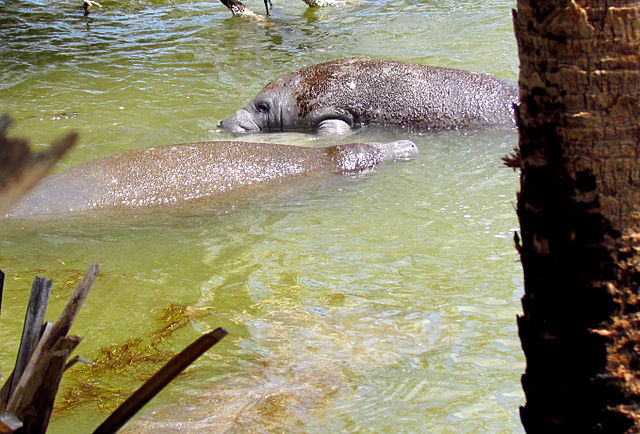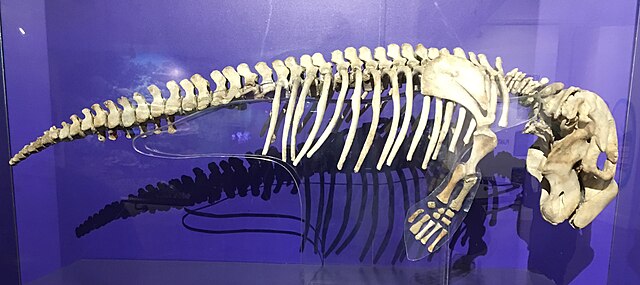The West Indian manatee, also known as the North American manatee, is a large, aquatic mammal native to warm coastal areas of the Caribbean, from the eastern US to northern Brazil. Living alone or in herds, it feeds on underwater plants and uses its whiskers to navigate. It is divided into two endangered subspecies, the Florida manatee in the US and the Antillean manatee in the Caribbean, both of which face pressure from habitat loss, pollution, and other human activity. The West Indian manatee is the largest living member of the sirenians, a group of large aquatic mammals that includes the dugong, other manatees, and the extinct Steller's sea cow.
West Indian manatee
Skull of a West Indian manatee on display at The Museum of Osteology, Oklahoma City, Oklahoma
Manatee from Crystal River, Florida
Basking at Haulover Canal, Merritt Island National Wildlife Refuge, Florida
The Sirenia, commonly referred to as sea cows or sirenians, are an order of fully aquatic, herbivorous mammals that inhabit swamps, rivers, estuaries, marine wetlands, and coastal marine waters. The extant Sirenia comprise two distinct families: Dugongidae and Trichechidae with a total of four species. The Protosirenidae and Prorastomidae families are extinct. Sirenians are classified in the clade Paenungulata, alongside the elephants and the hyraxes, and evolved in the Eocene 50 million years ago (mya). The Dugongidae diverged from the Trichechidae in the late Eocene or early Oligocene.
Sirenia
Dugong skeleton displayed at Philippine National Museum
Dugongs sift through the seafloor in search of seagrasses.
West Indian manatees in a conservation project in Brazil








